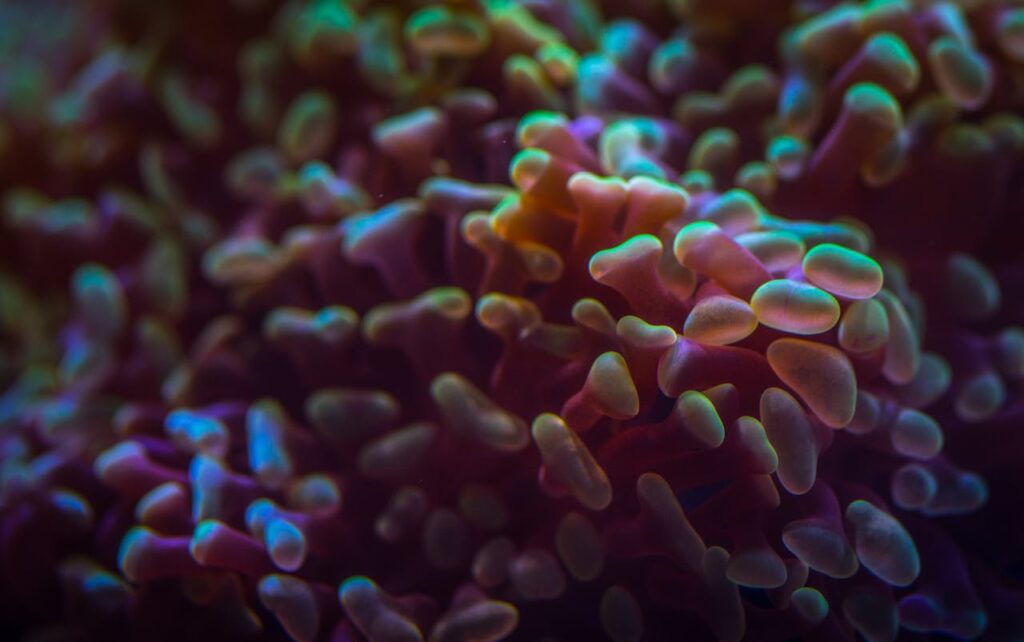The Microbe That Redefines Life Reminds Us Why Curiosity Still Matters

There are moments when science stops feeling like science and starts feeling like poetry. When something so small, so hidden, suddenly shifts how we see everything we thought we knew. This is one of those moments. Somewhere deep in the ocean, in a place invisible to the naked eye, a microbe has emerged to challenge our most sacred assumption: what it really means to be alive.

When Life Refuses to Fit Our Definitions
What does it mean to be alive when the very concept of life defies our best attempts to define it? For as long as science has existed, researchers have tried to draw a clear line separating what breathes and grows from what merely exists. Yet nature never stops blurring that line. Life is not a single checklist of traits but a spectrum of possibilities, from the obvious movement of animals to the hidden workings of cells that live invisibly in the deep. The story of Sukunaarchaeum mirabile begins in that gray space where definitions fail and curiosity takes over.
When a team of scientists from Canada and Japan examined the genetic makeup of a species of marine plankton, they uncovered something that seemed to belong nowhere on the biological map. The organism they found, later named Sukunaarchaeum mirabile, was neither a typical cell nor a virus. It possessed the structure of life yet behaved like something outside of it. This discovery offered more than a new data point; it challenged the very roots of how we think about existence itself.

The researchers realized that the microbe did not fit neatly within the established boundaries of biology. Its strange simplicity and dependence on another living host raised questions not only about evolution but also about the origins of complex life. The finding revealed how much of the microbial world remains unseen, quietly shaping the story of life without conforming to our human need for categories.
Such revelations remind us that science is not only about facts and figures but about wonder and humility. Every so often, something appears that forces us to question what we thought was settled truth. The discovery of Sukunaarchaeum is one of those moments, a small organism carrying a vast message about how mystery continues to define the living world.
Between Life and Not Life The Discovery of Sukunaarchaeum
The journey toward this discovery began with something unexpected hidden within the DNA of marine plankton. While analyzing genetic data from the species Citharistes regius, scientists noticed a mysterious loop of DNA that matched no known organism. What they found was so unusual that it forced them to look beyond established categories. This microscopic entity belonged to the domain Archaea, yet it stood apart from every known archaeal relative. It was eventually named Sukunaarchaeum mirabile, a tribute to a Japanese deity celebrated for its small size, perfectly echoing the organism’s own diminutive and enigmatic nature.

The organism’s structure proved both fascinating and perplexing. It possessed genes for creating ribosomes and messenger RNA, vital for synthesizing proteins and sustaining basic biological functions. However, it lacked nearly every metabolic pathway needed to sustain itself. Its genome was incredibly small, about 238,000 base pairs, less than half the length of the smallest known archaeal genome. Such a reduction revealed a profound dependency on its host, suggesting that Sukunaarchaeum cannot survive alone in any environment. It borrows from its host what it cannot provide for itself, existing in a delicate balance between independence and reliance.
The researchers described its design as profoundly stripped down, lacking virtually all recognizable metabolic pathways, and primarily encoding the machinery for its replicative core. This extreme specialization may represent an evolutionary strategy, streamlining to the point where survival itself becomes a shared act rather than a solitary one. Takuro Nakayama called it “not a virus, but a highly streamlined cellular organism,” explaining that it represents “a totally new branch in the archaeal tree of life.”
Such a statement marks more than the naming of a new species; it signals the uncovering of a whole new mode of existence. The discovery implies that evolution is far more flexible than we once believed. Life does not always follow the rules of autonomy and self sufficiency that textbooks describe. Instead, it sometimes thrives through radical cooperation, finding strength in dependence. This microbe stands as a quiet reminder that even at the smallest scale, life is not about isolation but about relationship and adaptation.
The Edge of Biology Redefining What It Means to Be Alive
The discovery of Sukunaarchaeum brings scientists face to face with one of biology’s oldest questions: what separates the living from the nonliving? This microscopic organism sits at that precise boundary, embodying a contradiction that forces a reexamination of our definitions. The National Human Genome Research Institute has described viruses as existing “near the boundary between the living and the nonliving,” and Sukunaarchaeum reveals just how porous that line can be.
To understand why this discovery is so important, it helps to look beyond its small size and consider what its existence represents. Sukunaarchaeum demonstrates that life may not be a fixed category but a continuum shaped by interaction and dependence. It possesses the ability to replicate and organize itself through cellular machinery, but lacks the power to sustain itself without another organism. This state of partial independence shows that life can exist in shades rather than absolutes, and that biology is full of exceptions that enrich rather than weaken its definitions.
Takuro Nakayama summarized this challenge perfectly, saying, “The existence of a cellular organism that seemingly lacks its own metabolism provides a new and important perspective to the ongoing discussion about the definition and minimal requirements of life.” His observation pushes researchers to confront a fundamental truth: our criteria for life may have been built around what we could see, not what truly exists.
The implications stretch far beyond microbiology. Understanding organisms like Sukunaarchaeum could reshape how we search for life on other planets, how we think about synthetic biology, and how we define the earliest stages of evolution on Earth. Its presence reminds scientists that the simplest life forms often carry the deepest clues about how complexity arose. Every new discovery like this one challenges the notion that life is a closed concept. Instead, it reveals that life might be best understood as a spectrum of processes—each one a reflection of connection, adaptation, and survival.
The Lesson Hidden in a Microbe The Power of Not Knowing
Every time we uncover something new about the universe, we realize how little we actually understand. For centuries, humans have built definitions to make sense of life: categories, rules, boxes. But discoveries like this one tear those boxes open.
Sukunaarchaeum, named after a Japanese deity known for its small stature, has one of the smallest genomes ever recorded. It contains just 238,000 base pairs, less than half the size of the smallest known archaeal genome. Yet, its impact on science is immense.

Nakayama said, “Sukunaarchaeum could be just the tip of the iceberg, pointing to a hidden diversity of life forms with ultra reduced genomes within the so called ‘microbial dark matter.’” In other words, there may be countless other forms of life out there that we haven’t even imagined yet.
That statement doesn’t just speak to biology. It speaks to life itself. How often do we think we know the full picture, only to realize we’ve been living in the dark, unaware of what we’re missing? The microbe becomes a metaphor for human existence: simple, small, dependent, and yet capable of revealing vast new worlds.
What Sukunaarchaeum Teaches Us About Ourselves
There’s something poetic about a creature that exists on the threshold of life. It embodies contradiction: fragile yet persistent, simple yet revolutionary. And in that contradiction lies a truth about us.
We, too, are constantly straddling boundaries, between knowing and not knowing, between control and surrender, between who we are and who we’re becoming. Like Sukunaarchaeum, we rely on connection. We depend on others to survive, to evolve, to find meaning.

Kate Adamala, a synthetic biologist at the University of Minnesota, said this organism “might be a fascinating living fossil, an evolutionary waypoint that managed to hang on.” In a way, so are we. We are living fossils of our past selves, constantly evolving, constantly redefining what it means to live.
Every discovery like this one is a call to remember that curiosity is sacred. That asking questions, even when we don’t have answers, is the heartbeat of progress.
Beyond the Microscope The Human Meaning of Discovery
The scientists who found Sukunaarchaeum weren’t looking to redefine life. They were simply exploring the unknown. And maybe that’s the point. Progress often happens when we’re not chasing certainty but following curiosity.
In a world obsessed with being right, Sukunaarchaeum whispers something different: stay curious. Because curiosity is what makes us truly alive.

We live in an era where information floods every second of our lives. We can Google any question, simulate any outcome, and predict almost anything. But no algorithm can replicate wonder. No AI can feel the quiet awe of seeing something that shouldn’t exist and realizing it does.
The microbe doesn’t just challenge science. It challenges us to remain humble in the face of mystery, to stay open to what doesn’t yet make sense.
Loading...

